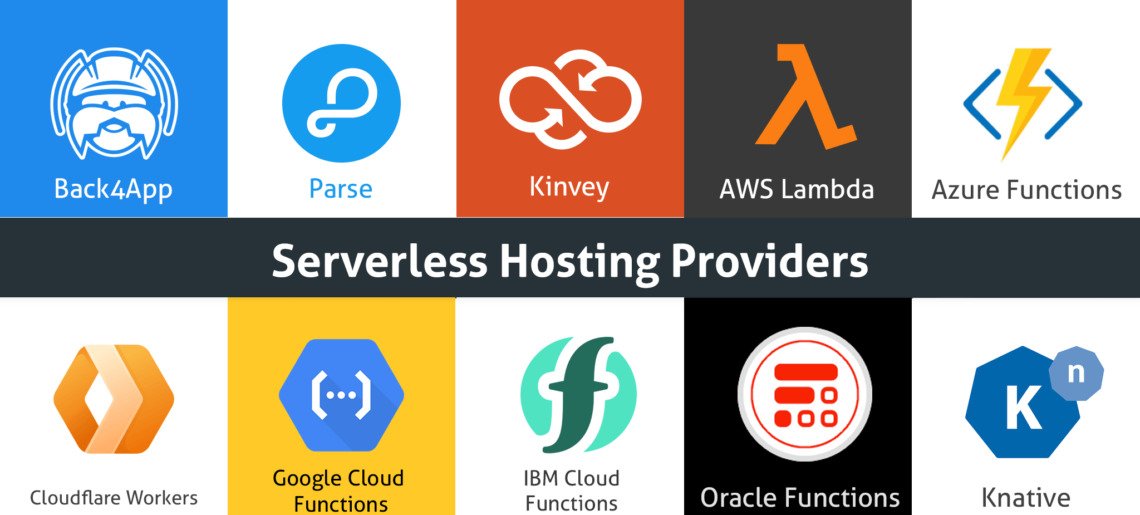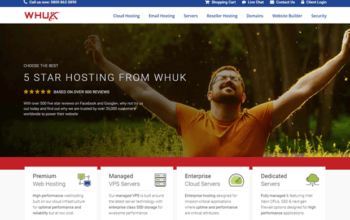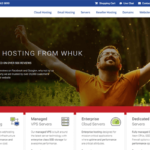Developers all around the planet devote endless hours addressing company coding issues. Then it comes to working their days with ops departments to work out how to get code to run and then making sure systems run efficiently. And it’s basically a never-ending challenge to control processes and make the programs run smoothly.
So, why not try giving that role to someone else? Several developments in IT, spanning from virtual computers to containers, cloud storage and even more, have arrived in the last two decades. Both these technologies are designed to make it easy for companies not to care about the underlying computers on which these codes work.
Serverless computing, moreover, has become an extremely prevalent model that brings this technique to a logical conclusion. You don’t have to worry anything about the OS or devices on which the code can operate, in the serverless computing method. This is how the service company would be performing all of this.
Would you like to hear more about serverless computing, which has generated an IT hype? Let’s take a peek at the details of serverless computing in depth. So, in this sense, you will get a clearer understanding of things.
What is Computation Without Servers?
Serverless computing is an efficient way of supplying end users with backend resources. Basically, it is a native cloud architecture that will enable organizations transfer much of their operating tasks to third-party service providers. A serverless design encourages enterprises to write and execute applications without the underlying technology being concerned at all.
The Serverless architecture is an outstanding architecture of cloud execution. The service vendor allocates and modifies the users for the storage and machine resources needed to operate a particular piece of code in this software execution model. Since there are servers used in this whole phase, the service companies take charge of the servicing and provisioning of these servers. Users don’t need to think at all about any of these issues.
The individual who decided to create a web application in the early days of the web had to buy and maintain the physical infrastructure required to operate a server. This was a costly and cumbersome venture. However, cloud came into being with the revolutions in the IT sector with the fundamental goal of supplying customers with ease and flexibility in the process of handling device resources or servers. At the point, though, serverless computing was more about renting space for set server devices. But in most instances, firms used to overdo this in order to guarantee that an increase in some operation or traffic does not surpass their services’ monthly cap. That is because their apps may be broken by this. Yet it demonstrates plainly that most of the leased processing room was more often lost.
However, at present, when we speak about serverless architectures, that implies offers from BaaS and FaaS. In this, organizations have to write code that addresses just their business rationale, and then send it to a supplier. Although the vendor can take control of the whole management of containers, hardware provisioning, and virtual machines, as well as functions such as multithreading, typically designed in technology for apps.
More generally, serverless functions are event-driven, implying that the code can only be invoked when it is enabled upon request. Any enterprise who is going to use serverless computing services would be paid on the basis of the computation. For any fixed bandwidth volume or number of servers at all, there is no need to reserve or compensate. This is because auto scaling is a serverless computing service.
Benefits in computation with Serverless
There are plenty of reasons to go serverless, whether you are creating a basic real-time chat program or working on an organization program. We also enlisted some of the advantages of going serverless. So you will get to know better explanations for doing so.
Enhanced scalability
If you are actually striving to be the next Google, then it is incredibly necessary to think whether or not your server can support the load volume. A serverless architecture will let the punches roll with you. And, if your application is effective and expands, it may become simpler for you to stage improvements that accommodate development. And if it doesn’t, then there will always be no damage done.
More time to boost the experience of consumers
Your application is definitely customer-friendly, but you realize the consumers don’t worry for infrastructure. They won’t really see the code running underneath the programs they are using, too. The only issue they care about is your application’s front end and the user interface. Fortunately, you are going to have a greater chance to maximize what consumers can encounter with your framework by implementing a serverless design. Since you have resources to spend further on the frontend.
Improved bandwidth
More frequently, serverless architectures globally include access points. It means that it would be simpler to accommodate people from all over the globe. This way, you will scale up your offerings without compromising the efficiency of your application.
Price falls
Will you want to cut the cost of development? Well, the better choice to think in this respect might be to go serverless. This is how you can outsource the maintenance of files, servers, and some of the obligations of program logic in this manner. Serverless infrastructure uses fewer human and computational capital, along with real costs. This is because you don’t have to build and maintain a server of your own. As the serverless architecture takes control of the whole infrastructure, you will concentrate on the essential resources. Surprisingly, when you go, the rate would be dependent on pay and depending on the usage cases.
Improved monitoring of production
We understand the fact that the phase of application creation comprises of many sub-stages, from preparation to creation and then testing to launch. The Serverless design would give you the benefit of more productive handling of these production activities.
Deployment easier
For your program, a serverless architecture might be great. Serverless is best for you to decide whether you choose to spin up some application quicker. This strategy is because, instead of requiring weeks to deploy an application, you will quickly get finished with the job within days or hours. In infrastructure maintenance, the key explanation for that is that you don’t have to grease your elbows. Instead, you have to work on the coding and release it directly after it’s completed.
Strengthened versatility
In contrast with conventional approaches, it is simpler to start deploying an application with a serverless architecture. It’s because computation without servers means quicker innovation. When you will see the quick return to tangible progress, you would be able to concentrate confidently on the next project. In addition, to increase the versatility of your software, you may also start developing the next app feature or microservice. You are not tied to any limitations in a serverless architecture. Pivoting in cases where a restructuring alternative is needed is often simpler.
Enhanced performance
You have to pay according to the resource usage in a serverless architecture. This ensures you will only be paying while you are using the server. This simply means that less waste in this case is guaranteed. In comparison, it is much more effective and you don’t have to think about scaling up the resources at all. With serverless computing, the problems are no longer DevOps, infrastructure, power preparation and setup.
Computing Downsides with Serverless
There are still several downsides of serverless computing, as in any other operation. To get a clearer understanding of what to potentially expect from a serverless computing model, take a look at the drawbacks mentioned below.
Debugging and monitoring can be complex.
To understand how the framework code can work after it has been implemented, it is difficult to duplicate the serverless architecture setting. In contrast to testing and debugging in other conventional forms, this will render device testing and debugging more difficult. As the program is split into smaller and different tasks, users would not be able to provide access into the backend processes. When using a serverless design methodology, this may be the main concern of every application developer.
Concerns over defense
Serverless implementations also introduced new security issues. If suppliers operate the whole backend facilities, then it may be challenging to thoroughly vet their reliability. That may be a concern for important or personal data processing applications.
Serverless is not designed for long processes that run
This can restrict the applications that can operate cost-effectively on the serverless architecture. Since the vendor would bill cash for the running sum of the app. For applications of long-running processes, this strategy will contribute to higher costs.
Output can be impacted by
Since serverless doesn’t operate continuously, when using, you will need to boot it up. This start-up period would eventually degrade your application ‘s efficiency. However, once a code has already been used, the vendor will keep it ready to be enabled, and it will not take longer to implement the order for this ready-to-use code.
There is a chance of vendor lock-in,
Both backend resources would be offered by manufacturers, as in the serverless design strategy. Therefore, the chances of retailer lock-in may be raised by this. Moreover, setting up the entire backend facilities with one supplier will, where appropriate, create difficulties in swapping suppliers. Particularly when different features could be provided by each seller.
The Top 10 Suppliers of Serverless
Get a peek in 2020 at our top 10 suppliers in computing. This is your selection of vendors:
- Back4App
- AWS Lambda
- Kinvey
- Cloudflare Workers
- Google Cloud Functions
- IBM Cloud Functions
- Parse
- Knative
- Microsoft Azure Functions
- Oracle Functions
No.1 Back4App
Back4app is one of the most impressive tools for the creation of serverless backend apps, built to allow developers to build super-fast apps. Without writing some code, it will help them create backends. Moreover, with back4app, developers would be able to host their apps without any difficulty handling and scaling the infrastructure. There are no technological locks that can stop the development of your apps.
Back4app proposes numerous methods. It has merged open-source software with a wide variety of property functionality and is able to deliver a box tool to developers. Not only is it great to provide developers with the pace they need to easily build and launch their software. But it also provides the versatility of scaling capital according to demands for their applications.
Proposal of merit
Obviously, back4app is super simpler to grasp and intended at lightening pace to create apps.
Pricing
A free edition is available, but the paid alternative begins at $5 per month.
No.2 AWS Lambda
AWS Lambda is one of the most interesting suppliers of FaaS resources that are designed to help you execute code without maintaining a server or delivering it. AWS Lambda may be known to be a powerful even-driven framework that functions when it is about to activate a feature. The code that will be loaded into the function only will be implemented.
This is, however, an inexpensive and successful serverless computing provider supported by Amazon Web Services. It will allow you to write applications that are self-contained or create functions in different languages. In order to ensure accurate, reliable and scalable execution, you should upload your encoded functions to AWS Lambda.
Proposal of merit
AWS Lambda is a benchmark by which other serverless resources are evaluated and helps to invent maximum serverless space.
Pricing
Free Tier open, although as you go pricing model, paying services are dependent on pay.
No.3 Kinvey
Kinvey is an exciting forum for enterprise-centered growth that keeps on constantly introducing fascinating features. To encourage developers to keep their software up-to – date in the best way possible. This serverless vendor allows developers on private or dedicated clouds to build and operate their apps. This approach, however, is intended to allow application developers and entrepreneurs to more effectively produce feature-rich, exclusive and up-to – date content. This is one of the hubs for high productivity growth, which provides a full range of resources to focus on. With this approach, with the aid of its cloud-based backend resources, developers and entrepreneurs would be able to build comprehensive networks along with frontend SDKs.
Proposal of merit
An enterprise-centric backend solution designed to cut the expense and time needed for processes of production.
Pricing
A free version is available, while the pro option begins at $2,500 per month.
No.4 Cloudflare Workers
Cloudflare staff are intended to transform the way users create and operate their software using them. It will help you to deploy your serverless code to data centers in over 200 cities and across 90 countries. This approach for a serverless architecture is intended to provide outstanding stability and efficiency. In comparison, you can only distribute the technology to all data centers within 15 seconds and can operate the program to different locations within milliseconds.
Proposal of merit
Cloudflare is known for its CDN, but with Staff, it provides low latency serverless capability. This may make it a successful option where reactivity is important at the tip.
Pricing
Free tier accessible, 0.50 / million monthly requests accessible for the Pro edition.
No.5 Google Cloud Functions
This is a serverless computing framework that would allow you to operate the code in the cloud or both locally without server management worries. It provides lots of distribution and management tools that can help you to quickly track the application as well as cloud storage tools. Most interestingly, it allows developers to concentrate more on writing the code of their apps without thinking about the daunting aspects of designing, handling and deploying their apps.
Proposal of merit
For companies that currently utilize Google Cloud, this approach is suitable since it offers efficient connectivity with other Google platforms with a familiar layout.
Pricing
Free Spark plan available, beginning with $0.40 / million invocations, pro edition.
No.6 IBM Cloud Functions
IBM Cloud Features is an innovative distributed storage service that, in response to queries, will operate application functions. On the basis of API queries, users may even set up custom actions. If you are searching for a serverless architecture designed to give you more than only execution of tasks, than this approach is designed for you. This is because it will help you watch how the serverless implementations operate with its automated performance management.
Proposal of merit
IBM Cloud features a well tailored serverless platform for companies searching for a serverless solution focused on the Apache OpenWhisk project.
Pricing
The Pro edition begins at $0.000017 per second per sprint.
No.7 Parse
Another awesome alternative that can be called the strongest serverless provider is Parse. This is an open-source solution sponsored by a large group of developers working together to optimize Parse’s user interface. Amazing features ranging from data modeling, real-time databases and social integrations, push notifications, email updates and much more are provided by the Parse app.
The aim of Parse is to enable developers utilize backend utilities that are ready to use. So that they will get enough flexibility to work on their company logic or conveniently deliver better customer interface. Parse will also support developers in the most practicable manner to speed up their production cycles and to meet their application development goals before time.
Proposal of merit
Parse is intended to speed up the creation phase and will assist developers to concentrate further on their apps’ key functionalities.
Pricing
The Parse server is available for use free of charge.
No.8 Knative
Knative is an efficient serverless architecture solution that was initially built by Google and more than 50 organizations participating. Knative, however, is built to provide an accessible and effective collection of components that are required in the best possible way to create and operate serverless applications. Knative provides an impressive set of features for successful cloud native apps, including autoscaling, zero to scale, eventing platform, in cluster builds. Both on location, in third-party data centers or in the cloud, Knative focuses on best practices to help developers and enterprises handle their software in a more impressive way.
Proposal of merit
Knative is an impressive solution sponsored by several suppliers, and the hope of this serverless design is that it will eventually have an optimal way to provide multi-way implementations of serverless functions.
Pricing
Charge as you head on your way
No.9 Microsoft Azure Functions
Azure Functions is an exciting serverless computer designed to assist developers to perform event-triggered programming without getting trapped in the managing and provisioning of resources. As Azure functions provide a triggered-based approach, a code script can also be conveniently performed in response to a broader variety of events. Azure features can be utilized more reliably for reusability, decoupling, shared and higher throughput, most amazingly. Surprisingly, one of the most reliable serverless architecture implementations is Azure Functions, which can operate seamlessly in the best possible way for higher output environments. In addition, several languages are provided, including JavaScript, C #, Node.js, F # and many more.
Proposal of merit
For organizations which already use virtual studio code, Azure Functions is an appealing and perfect solution. It will include a easy route to serverless feature creation and implementation.
Pricing
The pro edition with Free Services accessible begins at $0.000016 / GB-s
No.10 Oracle Functions
Oracle Functions is a provider of serverless infrastructure that provides container-based solutions for powerful implementation without servers. All the functions are bundled as efficient docker containers in this solution , making it simpler and quicker for users to create and deploy their solutions. In addition, this provider offers an open-source Fn project foundation, which ensures that there are fewer lock-in threats since customers will be able to build functions that will operate on the Fn project-based Oracle Functions service as well as in other implementations.
Proposal of merit
For companies pursuing container-based solutions for serverless implementation, Oracle Functions could be a safer option.
Pricing
Pro services launch every month from US$ 0.00001417 for over 400,000.
The abundance of large choices on the market will render it a difficult decision when it comes to choosing the right serverless vendors. However, we have brought the top 10 serverless vendors here to provide you with ease. Knowing each of the above in depth would undoubtedly allow you to appreciate which of these would fit well for you.








